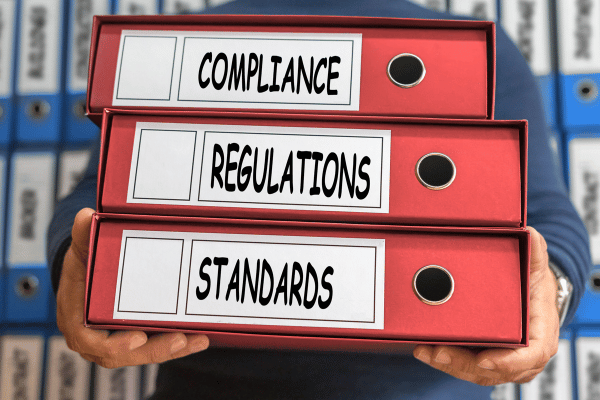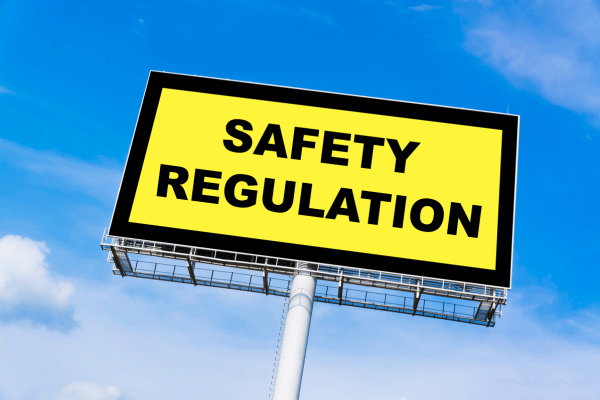BLOG

The Architect’s Guide to Building Regulations and Compliance UK
Navigating building regulations and compliance complexities can feel like a maze for even the most seasoned architects. In the UK, stringent regulations ensure buildings are safe, energy-efficient, and sustainable. But let's be honest—nothing is more frustrating than seeing months of hard work get held up by a compliance issue you could've addressed from the start. This guide is here to help you avoid that fate by diving deep into the essential regulations you'll need to follow, providing real-life examples, and offering practical tips that keep you on the right side of the law.
Understanding the Basics of UK Building Regulations
Before you begin sketching your next dream project, let's talk about UK building regulations. These regulations are a set of minimum standards for the design and construction of buildings to ensure public health, safety, and welfare. Whether working on a residential project, a commercial space, or a public institution, these standards will impact your work.
Why Building Regulations Matter
Building regulations seem like the dull cousin of architectural design. Still, they're the framework that keeps everything from collapsing—literally. They ensure that your structures are safe, energy-efficient, and accessible. Think of them as your project's invisible guardian angel, providing everything from fire safety to insulation thickness that is suitable.
Now, if you're wondering, "Can't I just wing it and figure this out as I go?"—the short answer is no. Non-compliance could lead to hefty fines, project delays, and, worst cases, removing non-compliant structures. So, let's avoid that nightmare, shall we?
The Main Parts of UK Building Regulations
UK building regulations are divided into 14 parts, each focusing on a different aspect of construction. Here's a breakdown of the most critical sections you should know:

Part A: Structure
This part deals with the structural integrity of your building. You'll need to ensure that your designs can withstand loads, including the weight of the building itself and forces like wind or snow. Real-life example: Have you ever seen those Victorian-era homes sagging under their own weight? Avoid that.
Part B: Fire Safety
Safety first! This section is all about preventing fires and ensuring occupants can safely evacuate. Fire doors, escape routes, and smoke alarms fall under this category. For instance, think of Grenfell Tower—fire safety regulations were a crucial issue in that tragedy. Don't cut corners here.
Part C: Site Preparation and Resistance to Contaminants and Moisture
This part ensures your site is prepared to deal with contaminants like radon and prevent moisture ingress. No one wants damp walls or mouldy basements.
Part M: Access to and Use of Buildings
Inclusivity matters. Part M ensures that buildings are accessible to everyone, including people with disabilities. Features like ramps, wider doorways, and accessible toilets are all part of the equation.
Common Challenges in Complying with Building Regulations
Even the best-laid plans can hit a few snags regarding compliance. The devil, as they say, is in the details. Here are some common challenges architects face:
Overlapping Regulations
One of the biggest headaches is that UK building regulations often overlap with local planning policies. For instance, your building may meet the national fire safety standards. Still, local regulations might impose additional requirements for high-rise buildings. Always check with your local planning authority.
Sustainability Requirements
With the UK government pushing toward net-zero emissions by 2050, architects are under increasing pressure to design energy-efficient buildings. Part L of the regulations deals with fuel and power conservation, requiring features like high-quality insulation and energy-efficient windows. It's not just a nice-to-have; it's mandatory.
Changing Regulations
Regulations change. As environmental concerns grow and technology advances, new laws are introduced. Staying up to date with the latest changes is crucial. For example, introduced in 2022, Part O addresses the risk of overheating in homes. Did your project from 2019 consider that? Probably not. Stay informed!
How to Ensure Compliance from the Start
Incorporating building regulations into your design process is the best way to ensure compliance. Here are some practical tips:

Work closely with Building Control
Building Control is your best friend (or worst enemy) regarding compliance. These are the people who will inspect your work and give you a thumbs-up or thumbs-down. Engage with them early to catch any potential issues before construction begins. Trust me, some extra paperwork now beats tearing down half a building later.
Detailed Documentation
Keeping detailed records of your design, calculations, and inspections is not only good practice but can also save you a world of trouble down the line. Solid documentation can be your saving grace if there's ever a dispute about whether your project meets regulations.
Continuous Education
The field of architecture is constantly evolving, and so are the regulations that govern it. Make it a habit to attend workshops, read the latest guidance, and stay on your game.
Real-Life Example: A School Project Gone Right
Let's put theory into practice. Imagine you're designing a new primary school. You need to ensure that the building is inspiring for young minds and complies with UK regulations. Here's how you'd approach this:

Fire Safety: Incorporate a robust fire escape plan with clearly marked exits and fire doors. Use non-combustible materials for walls and roofing.
Access: Ensure all classrooms and facilities are accessible to students with disabilities, including wide doorways and ramps.
Energy Efficiency: Design the building to incorporate large windows for natural lighting, energy-efficient heating systems, and solar panels.
By considering these elements from the start, you will not only meet the regulations but also create a safer, more efficient, and ultimately more enjoyable space for its users.
Conclusion
Building regulations might seem like a bureaucratic hurdle, but they're essential for creating safe, sustainable, and inclusive spaces. By staying informed, working closely with Building Control, and incorporating compliance into your design process, you'll save time, money, and stress. Now, go forth and create something that looks good and meets the regulations' requirements.
FAQs
What happens if my building doesn't meet UK building regulations?
Suppose your building doesn't meet UK building regulations. In that case, you may face fines, project delays, or even be required to demolish non-compliant sections. Ensuring compliance from the start is crucial to avoid these costly issues.
How do building regulations differ from planning permission?
Building regulations focus on the technical aspects of construction, such as safety and energy efficiency. On the other hand, planning permission deals with the broader impact of your building on the surrounding area, including its appearance and environmental footprint.
Are building regulations the same across the UK?
Building regulations can vary slightly between England, Scotland, Wales, and Northern Ireland. Always check the specific rules for your region to ensure compliance.

The Architect’s Guide to Building Regulations and Compliance UK
Navigating building regulations and compliance complexities can feel like a maze for even the most seasoned architects. In the UK, stringent regulations ensure buildings are safe, energy-efficient, and sustainable. But let's be honest—nothing is more frustrating than seeing months of hard work get held up by a compliance issue you could've addressed from the start. This guide is here to help you avoid that fate by diving deep into the essential regulations you'll need to follow, providing real-life examples, and offering practical tips that keep you on the right side of the law.
Understanding the Basics of UK Building Regulations
Before you begin sketching your next dream project, let's talk about UK building regulations. These regulations are a set of minimum standards for the design and construction of buildings to ensure public health, safety, and welfare. Whether working on a residential project, a commercial space, or a public institution, these standards will impact your work.
Why Building Regulations Matter
Building regulations seem like the dull cousin of architectural design. Still, they're the framework that keeps everything from collapsing—literally. They ensure that your structures are safe, energy-efficient, and accessible. Think of them as your project's invisible guardian angel, providing everything from fire safety to insulation thickness that is suitable.
Now, if you're wondering, "Can't I just wing it and figure this out as I go?"—the short answer is no. Non-compliance could lead to hefty fines, project delays, and, worst cases, removing non-compliant structures. So, let's avoid that nightmare, shall we?
The Main Parts of UK Building Regulations
UK building regulations are divided into 14 parts, each focusing on a different aspect of construction. Here's a breakdown of the most critical sections you should know:

Part A: Structure
This part deals with the structural integrity of your building. You'll need to ensure that your designs can withstand loads, including the weight of the building itself and forces like wind or snow. Real-life example: Have you ever seen those Victorian-era homes sagging under their own weight? Avoid that.
Part B: Fire Safety
Safety first! This section is all about preventing fires and ensuring occupants can safely evacuate. Fire doors, escape routes, and smoke alarms fall under this category. For instance, think of Grenfell Tower—fire safety regulations were a crucial issue in that tragedy. Don't cut corners here.
Part C: Site Preparation and Resistance to Contaminants and Moisture
This part ensures your site is prepared to deal with contaminants like radon and prevent moisture ingress. No one wants damp walls or mouldy basements.
Part M: Access to and Use of Buildings
Inclusivity matters. Part M ensures that buildings are accessible to everyone, including people with disabilities. Features like ramps, wider doorways, and accessible toilets are all part of the equation.
Common Challenges in Complying with Building Regulations
Even the best-laid plans can hit a few snags regarding compliance. The devil, as they say, is in the details. Here are some common challenges architects face:
Overlapping Regulations
One of the biggest headaches is that UK building regulations often overlap with local planning policies. For instance, your building may meet the national fire safety standards. Still, local regulations might impose additional requirements for high-rise buildings. Always check with your local planning authority.
Sustainability Requirements
With the UK government pushing toward net-zero emissions by 2050, architects are under increasing pressure to design energy-efficient buildings. Part L of the regulations deals with fuel and power conservation, requiring features like high-quality insulation and energy-efficient windows. It's not just a nice-to-have; it's mandatory.
Changing Regulations
Regulations change. As environmental concerns grow and technology advances, new laws are introduced. Staying up to date with the latest changes is crucial. For example, introduced in 2022, Part O addresses the risk of overheating in homes. Did your project from 2019 consider that? Probably not. Stay informed!
How to Ensure Compliance from the Start
Incorporating building regulations into your design process is the best way to ensure compliance. Here are some practical tips:

Work closely with Building Control
Building Control is your best friend (or worst enemy) regarding compliance. These are the people who will inspect your work and give you a thumbs-up or thumbs-down. Engage with them early to catch any potential issues before construction begins. Trust me, some extra paperwork now beats tearing down half a building later.
Detailed Documentation
Keeping detailed records of your design, calculations, and inspections is not only good practice but can also save you a world of trouble down the line. Solid documentation can be your saving grace if there's ever a dispute about whether your project meets regulations.
Continuous Education
The field of architecture is constantly evolving, and so are the regulations that govern it. Make it a habit to attend workshops, read the latest guidance, and stay on your game.
Real-Life Example: A School Project Gone Right
Let's put theory into practice. Imagine you're designing a new primary school. You need to ensure that the building is inspiring for young minds and complies with UK regulations. Here's how you'd approach this:

Fire Safety: Incorporate a robust fire escape plan with clearly marked exits and fire doors. Use non-combustible materials for walls and roofing.
Access: Ensure all classrooms and facilities are accessible to students with disabilities, including wide doorways and ramps.
Energy Efficiency: Design the building to incorporate large windows for natural lighting, energy-efficient heating systems, and solar panels.
By considering these elements from the start, you will not only meet the regulations but also create a safer, more efficient, and ultimately more enjoyable space for its users.
Conclusion
Building regulations might seem like a bureaucratic hurdle, but they're essential for creating safe, sustainable, and inclusive spaces. By staying informed, working closely with Building Control, and incorporating compliance into your design process, you'll save time, money, and stress. Now, go forth and create something that looks good and meets the regulations' requirements.
FAQs
What happens if my building doesn't meet UK building regulations?
Suppose your building doesn't meet UK building regulations. In that case, you may face fines, project delays, or even be required to demolish non-compliant sections. Ensuring compliance from the start is crucial to avoid these costly issues.
How do building regulations differ from planning permission?
Building regulations focus on the technical aspects of construction, such as safety and energy efficiency. On the other hand, planning permission deals with the broader impact of your building on the surrounding area, including its appearance and environmental footprint.
Are building regulations the same across the UK?
Building regulations can vary slightly between England, Scotland, Wales, and Northern Ireland. Always check the specific rules for your region to ensure compliance.
FAQS
What services do EE Architects in Chiswick West London typically offer?
At EE Architects in Chiswick, West London we offer a comprehensive range of services including residential and commercial architecture, interior design, educational building design, and renovations. We provide consultations to understand client needs, create detailed design plans, and manage the entire construction process. EE-Architects excels in these areas, ensuring each project is tailored to meet specific client requirements with a focus on sustainability and innovation.
How do I choose the best architects in West London for my project?
Choosing the best architects in Chiswick, West London or beyond involves evaluating their experience, portfolio, and client reviews. It's important to select an architect who understands your vision and can provide tailored solutions. EE-Architects stands out due to its extensive experience, innovative designs, and commitment to sustainable practices, making it an excellent choice for various architectural projects.
What should I expect during an architectural consultation with EE Architects in Chiswick?
During an architectural consultation with one of our experts, expect to discuss your project vision, budget, and timeline. The architect will provide insights and suggestions based on their expertise. EE-Architects offers thorough consultations, ensuring a clear understanding of client needs and providing expert advice to help shape the project effectively.
Are eco-friendly architectural designs available with EE Architects?
Yes, eco-friendly architectural designs are readily available with EE Architects. These designs focus on sustainability, energy efficiency, and the use of environmentally responsible materials. EE-Architects is known for its commitment to eco-friendly architecture, integrating sustainable practices into every project to minimise environmental impact while enhancing aesthetic appeal.
Can EE Architects in Chiswick, West London handle both residential and commercial projects?
Yes, EE Architects in Chiswick, West London are equipped to handle both residential and commercial projects. We possess the expertise to design functional and aesthetically pleasing spaces for various purposes. EE-Architects offers specialised services for both sectors, ensuring that each project, whether a home or a commercial space, meets the highest standards of design and functionality.
Residential Architects
Commercial Architects
Educational Architects
Landscape Architects
Renovation Architects
Interior Design
Renovation
Construction
Master-Planning
Residential Projects
Commercial Projects
Education Project
Community Projects
International Projects

